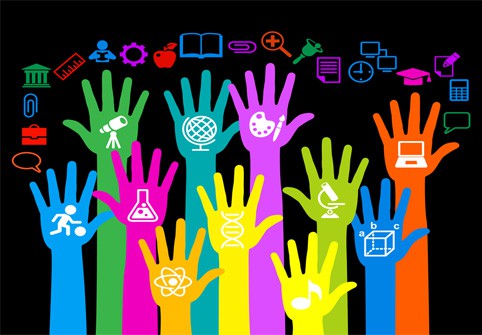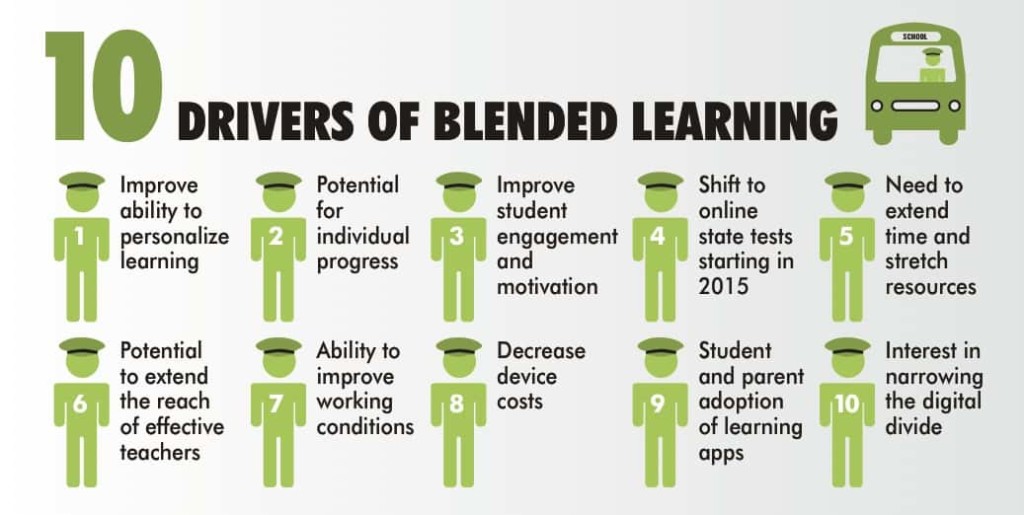How Blended and Adaptive Learning Support the Transition to the Common Core

Developed by teachers in a process initiated by governors and state education leaders across the nation, the Common Core State Standards (CCSS) set a high bar for defining what students should know and be able to do in Mathematics and Language Arts. Today’s students are preparing for 21st century careers that are more demanding than ever before. The CCSS establish a set of consistent guidelines for our students and encourage the development of those skills necessary to be successful in our changing world—critical thinking, problem solving, and analytical skills among many others. By supporting the creation of more personalized and deeper learning opportunities, technology will be key in the CCSS implementation strategy for schools and districts.
As defined by theClayton Christensen Institute, blended learning is a formal education program in which:
|
Why Blended Learning? As states across the nation transition to the CCSS, they should simultaneously explore the idea of implementing blended learning. For most states, new CCSS online assessments will begin in the 2014–15 school year, providing an ideal timeline for schools to make the shift to digital instruction materials and phase in a high-access environment. Blended learning isn’t just the addition of technology into the classroom, it must intentionally integrate the technology to leverage teaching, customize instruction, and expand options for every learner.
This new model of instruction combined with powerful new tools gives kids a shot at reaching the deeper conceptual understanding and critical thinking skills required for success in the CCSS. In “The Importance of Evaluating Digital Curricula,” Dr. Tim Hudson, Senior Director of Curriculum Design for DreamBox Learning, explains the importance of inspiring and challenging young minds, “As educators know from cognitive research and their own experiences, learning isn’t accomplished by putting thoughts into a mind, but rather by empowering a mind to generate thoughts.”

(Source: Blended Learning Implementation Guide 2.0,Digital Learning Now!)
Why Adaptive Learning?Adaptive learning is a computer-based and/or online educational system that modifies the presentation of material in response to student performance. Best-of-breed technologies also provide fine-grained data. Intelligent Adaptive Learning™ technology provides digital learning that immerses students in modular learning environments where every decision a student makes is captured, considered in the context of sound learning theory, and then used to guide the student’s learning experiences, to adjust the student’s path and pace within and between lessons in real-time, and to provide formative and summative data to teachers. Adaptive learning also helps personalize learning for students working away from the classroom, and can provide valuable information and insights for parents as well.
Combining blended learning with adaptive programs will make for a smoother transition toward the greater focus on deeper conceptual understanding and the higher order thinking skills of the CCSS. Students are encouraged to reach their full potential through personalized and competency-based models of instruction. Adaptive learning technology can serve as an invaluable support to ease this shift to such models by providing immediate personalization and data to guide core instruction.
Teachers today can struggle to meet the broad range of diverse learners in their classrooms. Adaptive platforms support teachers by giving instant recommendations based on information that may not have otherwise been available. “Data Backpacks: Portable Records and Learner Profiles,” from Digital Learning Now! explains such information and the benefits of well-informed educators, “Teachers can use metadata such as keystroke information, how much time students spend on each question, and what types of activities generate the most success to inform their understanding of each student’s motivation and to form a comprehensive Learner Profile that will drive sophisticated recommendation engines and produce customized task lists of learning opportunities for each of their students across both content and context.”
The Power of Data-driven Instruction. The constant analysis of data can be a daunting task for educators. In order to keep what the authors of the CCSS call “consistent progressions” and “coherent connections,” teachers must have solid curriculum expertise. Adaptive software lightens the workload for educators by providing comprehensive and current information on students’ learning paths as well as potential next steps for continued growth. This allows students to genuinely work at their own pace and increases opportunities for deeper understanding of content, engaging them precisely where they need to be engaged.
CCSS program alignment eases the transition. When the CCSS are aligned, these programs improve the effectiveness of teachers and arm them with information and data that gives greater insight into how well students are thinking and learning, and thus progressing toward their learning goals. Educators can use the data to efficiently group students, build peer relationships, guide individualized learning pathways, and help students make stronger connections. Students benefit from the personalization by being presented with the exact lesson they need at the exact moment they need it. The power of this customization is not only in the individual lesson, but in the individual learning trajectory and profile that can be created for students. A digital backpack that houses general student information with student progress toward mastery of standards supports an expanded learner profile. It includes learning preferences (modalities and environments) and helps teachers to further tailor the learning experience for students.
As highlighted in “The Future of Learning,” states that have adopted the CCSS have improved ability to share tools and resources. This increases the capacity to build large networks and communities of educators across the country just as technology increases the capability to share these resources more widely.
As with any educational initiative or strategy, a blended learning model and the digital curricula used in conjunction with it should strengthen the skills outlined in the CCSS and work toward a mission of higher achievement for a greater number of students.
This post is a component to the DreamBox Blended Learning Toolkit.
Digital Learning Now and DreamBox Learning are Getting Smart Advocacy Partners.


0 Comments
Leave a Comment
Your email address will not be published. All fields are required.